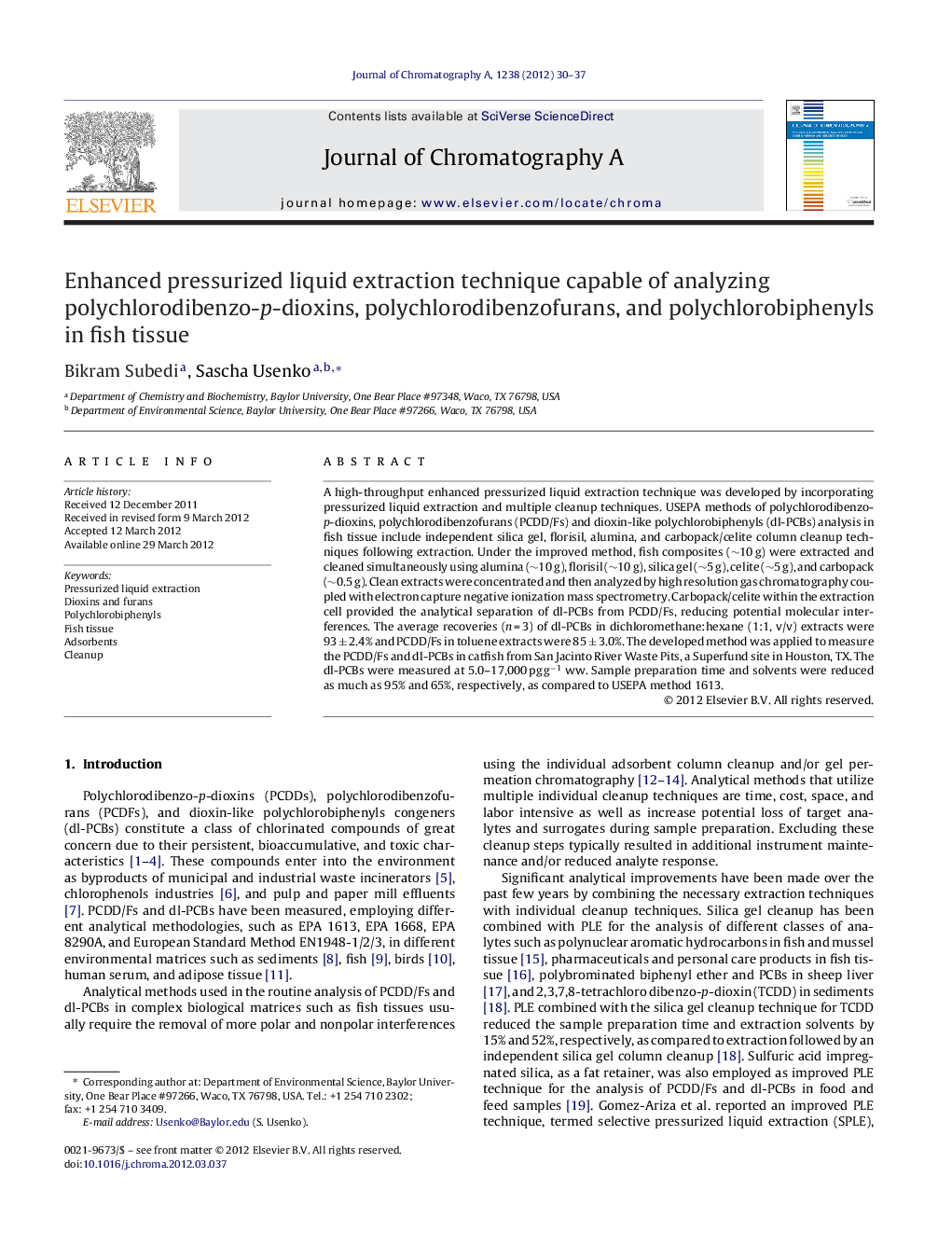| Article ID | Journal | Published Year | Pages | File Type |
|---|---|---|---|---|
| 1200896 | Journal of Chromatography A | 2012 | 8 Pages |
A high-throughput enhanced pressurized liquid extraction technique was developed by incorporating pressurized liquid extraction and multiple cleanup techniques. USEPA methods of polychlorodibenzo-p-dioxins, polychlorodibenzofurans (PCDD/Fs) and dioxin-like polychlorobiphenyls (dl-PCBs) analysis in fish tissue include independent silica gel, florisil, alumina, and carbopack/celite column cleanup techniques following extraction. Under the improved method, fish composites (∼10 g) were extracted and cleaned simultaneously using alumina (∼10 g), florisil (∼10 g), silica gel (∼5 g), celite (∼5 g), and carbopack (∼0.5 g). Clean extracts were concentrated and then analyzed by high resolution gas chromatography coupled with electron capture negative ionization mass spectrometry. Carbopack/celite within the extraction cell provided the analytical separation of dl-PCBs from PCDD/Fs, reducing potential molecular interferences. The average recoveries (n = 3) of dl-PCBs in dichloromethane:hexane (1:1, v/v) extracts were 93 ± 2.4% and PCDD/Fs in toluene extracts were 85 ± 3.0%. The developed method was applied to measure the PCDD/Fs and dl-PCBs in catfish from San Jacinto River Waste Pits, a Superfund site in Houston, TX. The dl-PCBs were measured at 5.0–17,000 pg g−1 ww. Sample preparation time and solvents were reduced as much as 95% and 65%, respectively, as compared to USEPA method 1613.
► High-throughput enhanced pressurized liquid extraction technique. ► Incorporated pressurized liquid extraction and multiple cleanup techniques. ► Combined silica gel, florisil, alumina, and carbopack/celite with PLE. ► Reduced sample preparation time by 95% and solvent by 65%. ► High-throughput analysis of PCBs, Dioxins, and Furan in fish tissue.
